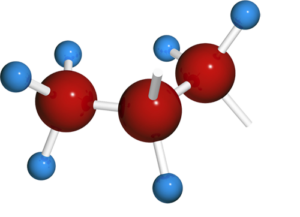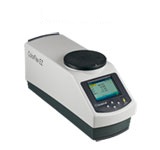 AN 1001.01 ALPHA
AN 1001.01 ALPHA
Measuring the Water Whiteness of Liquids Using the APHA Index.
 AN 1002.01 Standard Observer
AN 1002.01 Standard Observer
CIE Standard Observers and calculation of CIE X, Y, Z color values.
 AN 1003.01 Small Samples
AN 1003.01 Small Samples
Color Measurement on Very Small Samples
 AN 1004.01 Gardner Index
AN 1004.01 Gardner Index
Measuring Degrees of Yellowness with Gardner Index.
 AN 1005 HunterLab vs CIE Lab
AN 1005 HunterLab vs CIE Lab
Measuring Color using Hunter L, a, b vs CIE 1976 L*a*b*.
 AN 1013 Averaging
AN 1013 Averaging
Averaging in Color Measurement.
 AN 1018 Hitch Stdz
AN 1018 Hitch Stdz
Using Hitch Standardization on a Series of Color-Measuring Instruments.
 AN 1030 Hot Liquid Samples
AN 1030 Hot Liquid Samples
The transmission color measurement of the hot liquid sample
 AN 1031 Identification of Measurement Parameters
AN 1031 Identification of Measurement Parameters
Identification of Measurement Parameters.
 AN 1033 Color versus Appearance
AN 1033 Color versus Appearance
Understanding the difference between measuring color and measuring appearance.
 HunterLab Solution Matrix
HunterLab Solution Matrix
Geometry, Measurement Modes, and Indices.
 MM 5008 Measuring Opaque Liquids with ColorQuest XE
MM 5008 Measuring Opaque Liquids with ColorQuest XE
Measurement method for opaque liquids using the ColorQuest XE, UltraScan PRO, UltraScan VIS.
 MM 5033 Measuring Opaque Liquids with UltraScan VIS
MM 5033 Measuring Opaque Liquids with UltraScan VIS
Measurement method for flat, opaque solids using the UltraScan PRO, UltraScan VIS, or ColorQuest XE.
 MM 5058 Measuring Opaque Liquids with UltraScan PRO
MM 5058 Measuring Opaque Liquids with UltraScan PRO
Measurement method for flat, opaque solids using the UltraScan PRO, UltraScan VIS, or ColorQuest XE.



 ColorFlex EZ (Directional 45°/0° Geometry, Reflectance, 400-700 nm)
ColorFlex EZ (Directional 45°/0° Geometry, Reflectance, 400-700 nm) LabScan XE (Directional 0°/45° Geometry, Reflectance, 400-700 nm)
LabScan XE (Directional 0°/45° Geometry, Reflectance, 400-700 nm)